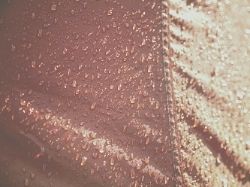If you’re out on a camping trip and the heavens suddenly open, the last thing you want is to get soaked inside your tent. It is vital that a tent provides a waterproof shelter and while most modern tents are well equipped for this, you will need to maintain the waterproofing if you want it to retain its effectiveness.

As a rule of thumb, you can get away with waterproofing your tent every couple of years. This is on the assumption that you will be using the tent for between two and three weeks each year.
Of course, knowing when to waterproof the tent is one thing, but there is also the consideration of how to do this. In this article, we are going to be looking at the frequency that a tent may need to be waterproofed and the best way to do it.

When Do You Need To Waterproof Your Tent?
There are campers who will avoid waterproofing their tent until they really feel as though it needs it. If you are willing to leave it to chance, then you may fall into this category. Many people ask the question wether you need to waterproof a brand new tent? Obviously when you notice that the waterproofing is failing, you can begin the process.
However, for the most part, it is a good idea to have a schedule and stick to it. The more you use your tent, especially in wet weather, the more you are going to need to waterproof it.
There are certain factors that you will need to consider when determining how frequently you should waterproof a tent. While average use will require waterproofing every couple of years, the following may affect this timeframe;
- The type of tent you are using (polycotton or cotton tents typically do not need to be reproofed as these materials are naturally waterproof and don’t normally come with a waterproof coating.)
- The weather conditions on each camping trip (direct sunlight can affect the tents waterproofing just as much as rain)
- The waterproof rating (the HH rating on your tent will let you know how waterproof it is. The higher this number, the longer you will be able to wait between waterproofing.)
What Makes A Tent Waterproof?
One of the most effective ways that manufacturers waterproof a tent is by applying a waterproof coating. Typically, there will be a polyurethane coating followed by a Durable Water Repellent. Coupled, these are a force to be reckoned with.

As we have mentioned, your tent will come with a Hydrostatic Head rating and this will tell you how waterproof it is. This rating refers to how waterproof the fabric is and is given according to how much pressure it takes to force water through the material.
Typically, a tent with a HH rating of 2000 will be OK for mild camping conditions, however, if you attempted to use this in a heavy bout of rain, the seams would probably leak. Normally, around 8000HH should be the minimum, especially with the unpredictable UK weather. Aside from this, you should be looking at the following factors;
- The tents zips should be protected to prevent water from seeping in. The best tent zips will be covered with plastic or fabric which acts as a barrier.
- The seams of the tent will need to be checked for small holes or perforations. In addition to this, the seams should have been sealed and this also applies to where toggles and other components have been stitched into the main tent fabric.
- If the tent has a sewn-in ground sheet, you should make sure that this is a bathtub ground sheet. These come up at the sides which is excellent for preventing water from entering. Furthermore, the HH rating of the ground sheet should be higher to account for groundwater.
- Look at what type of waterproof coating has been applied to the tent. Some are more effective than others. This is one of the first lines of defence against water and allows rain to roll off the tent rather than soaking through the fabric.
How To Waterproof A Tent
One of the most important parts of reproofing a tent is to apply another layer of the waterproof coating. There are many different options on the market but Fabsil is widely recognised as one of the most effective. This comes as an aerosol and is quick and easy to spray on your tent. However, before you start spraying, you must make sure that you prepare the tent.
- The first thing you will need to do is ensure that the tent is clean and dry. Pitch the tent and give it a clean, allowing it to dry thoroughly.
- If you are using an aerosol water repellent then this should be evenly sprayed over the surface of the material. Alternatively, there are products that can be painted onto the tent using a brush. Both are effective, which you use is largely down to personal preference.
- When you have finished applying the solution, wipe the fabric with a clean, dry cloth to remove any excess and clear up any drips.
- If you have had problems with water leaking through the seams, you can buy seam sealers which should be applied after the waterproof coating.
- You should now leave the tent to dry completely before you pack it away.
It is best to perform your reproofing on a dry, overcast day. These gentle conditions will allow the tent to dry without affecting the newly applied coating. Check out our Best Tents Guide for some great tent!
Conclusion
Sleeping in a tent is one of life’s great adventures but when the weather lets you down, you need a tent that will provide excellent waterproof shelter from the storm. Your tent will come with a waterproof coating and several features that prevent water from entering. It will also have a HH rating that tells you how water-resistant it is.
However, from time to time, you will need to reapply a waterproof coating to make sure that the tent remains suitable for wet weather use. For those who use their tent for a few weeks each year, reproofing every two years will be sufficient. However, if you use the tent more frequently, then you may need to apply a new coating more often.

